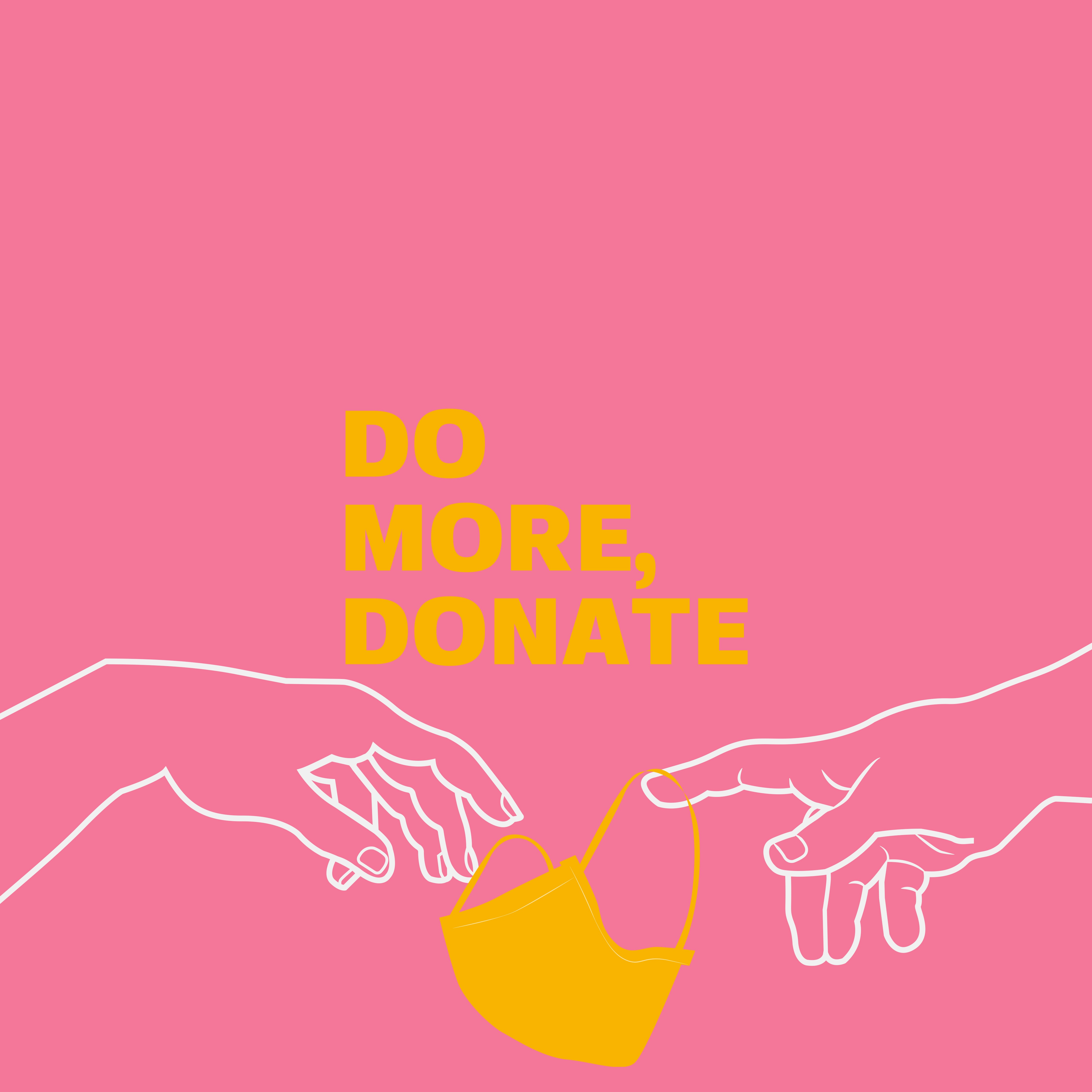Makeshift home offices and Zoom meetings have become a new normal for many of us. Businesses, restaurants, and schools have also had to adapt as much of our lives suddenly shifted online, and nonprofits have been no exception. As in-person events continue to be postponed or cancelled due to social distancing policies, many nonprofits and charitable organizations are left wondering how to plan successful virtual fundraising events in a post-COVID-19 world.
Now more than ever, nonprofits are reimagining traditionally in-person fundraisers in innovative ways. Here are 10 virtual fundraising event ideas to keep donors engaged and raise funds virtually.
1. Virtual Walk, Run, or Bikeathon
Before “six feet apart” became a repeated mantra in every grocery store and neighbors became wary of passing each other on the sidewalk, charitable walk, run or bikeathon events were great ways for the community to get together in a healthy way for a good cause. Now, many nonprofits are engaging participants online by doing virtual races and challenges. Participants can register on digital fundraising platforms and raise money as they complete challenges at their own pace.
A great example is the V Foundation’s Victory Ride to Cure Cancer. The V Foundation has leveraged fundraisers to contribute to breakthrough cancer research nationwide, and this year they launched the Reimagined 2020 Victory Ride. Participants can register for free, set their own goals, and raise money throughout the month of August. AAE was happy to join the cause this year, and we are proud to have raised over $2000 virtually as a team. Check out our team page here.

2. Crowdfunding
Crowdfunding has been a popular option for raising money online for many years. Instead of relying on a few large investors, a crowdfund campaign appeals to hundreds or even thousands of potential donors, or “backers.” Crowdfund platforms like Kickstarter, Indiegogo and GoFundMe have raised millions of dollars for creative projects, startup businesses and charitable causes.
There are different types of crowdfunding. Donation-based crowdfunding appeals to people to donate to a cause for nothing in return, while a rewards-based campaign encourages people to donate in return for a product or service. Businesses may also offer incentives for higher fundraising contributions, and they might offer donors a discount or early release of a product in exchange.
Crowdfunding has been a successful method of garnering support for organizations and individuals affected by the pandemic, and is also a popular platform to raise awareness and funds for communities in need.
3. Peer-to-Peer Fundraising
Similar to crowdfunding, a peer-to-peer fundraising campaign empowers supporters to fundraise on behalf of an organization. Peer-to-peer fundraising is multi-tiered and allows people to create personal fundraising pages for a larger campaign. Through these efforts they can spread awareness, set their own fundraising goals and raise money from friends, family, and their community.
Peer-to-peer fundraising helps to create a sense of community and can be campaigned in a variety of creative ways, like virtual marathons or social media challenges. For example, earlier this year AAE participated in a virtual food drive for the Food Bank of Central and Eastern North Carolina. As a company and individually, we shared the food drive with our networks and raised $2,236.
4. UnGala
Instead of tackling the inevitable planning and expenses of hosting an in-person gala, unGalas embrace a less traditional approach by turning it into a peer-to-peer fundraising campaign over a set period of time. Instead of ticket sales, attendees donate directly to the organization, and instead of attending an event, the main goal is to raise money and engage with the organization’s cause before the deadline.
In 2019, Girls Inc. hosted their second annual unGala as a campaign over a two month period. Instead of inviting participants of the fundraiser to attend an event at the end of the campaign, Girls Inc. encouraged donors to spend the evening in any way they chose in support of their cause.
Alternatively, unGala organizers could invite donors to dress accordingly, encourage them to cook or offer food delivery gift cards to registered attendees, and join them for a virtual dinner party. Attendees can get to know each other in breakout rooms or can engage with featured keynote speakers.
5. Virtual Workshops
Due to social distancing policies, many of us have pursued new hobbies to keep ourselves occupied at home. Whether it’s baking a loaf of bread from scratch, starting a daily yoga routine or attending a weekly Zoom happy hour with friends, people are eager for self-improvement, connection and positive engagement.
Virtual workshops would allow potential donors to learn something new from home. Invite a celebrity chef to host a virtual cooking class, an author for a virtual book club, or host a yoga and meditation session, with all proceeds going to a chosen nonprofit. Offer incentives for tiered donations, like making a virtual class available on-demand or offering gift cards.

6. Virtual Keynotes and Webinars
The event industry has seen an unprecedented pivot to virtual events this year, and with it comes a host of new opportunities for virtual event planning. Nonprofits can reach wider audiences by leveraging their fundraising events on virtual platforms through webinars, keynote presentations, or a topical speaker series. Virtual presentations can be followed by a call-to-action to donate, registration fees could go directly to the cause, or on-demand webinars could be made available only to donors.
7. Livestreams
Livestreams are a great way to engage with an audience. Connect with potential donors on platforms like Facebook, Instagram Live or Zoom to supplement longer virtual events or to direct people to a donation or crowdfunding page.
Livestreams allow organizations to get creative with virtual event ideas and fundraisers. Organize a social media takeover by a celebrity, influencer, or keynote speaker to engage with donors, live-stream movie watch parties, join trending social media challenges, and more. Live-streaming less traditional virtual marathons is also a popular way to raise money. In a famous 2016 example, Jesse Carey, a podcaster and editor for RELEVANT, live-streamed himself watching Nicolas Cage movies for 24 hours, raising $30,953 for the nonprofit Charity: Water.
8. Virtual Auction
A live auction can easily be pivoted into a virtual event by setting up a platform where items can be viewed and bid on, with proceeds going to a chosen nonprofit or charity. A silent auction can be live-streamed and the highest bidders announced in a virtual dinner party or gala. Even better? Include performances or featured speakers in between announcements to spice up the event.
9. Virtual Performance or Concert
Virtual concerts or festivals are fun virtual event examples that attract a large audience and potential donors. Ticket fees to watch favorite artists perform in a livestream will not only help fund nonprofits, but is a great way to bring people together and uplift a good cause.
10. Drive-ins
Going to a drive-in theater is no longer just a nostalgic night out of decades past. With indoor theaters across the U.S. temporarily closing their doors during the pandemic, drive-ins have sputtered to life around the country as a fun and socially distant alternative.
Drive-ins aren’t only a great movie night substitute, but can be a unique solution to performances, screenings and fundraiser events. One such event recently benefited the Charlize Theron Africa Outreach Project. The drive-in gathering included a silent auction, Q&A, and screening of Mad Max: Fury Road. Organizers of the event prioritized everyone’s healthy and safety by following social distancing guidelines, sending gift bags directly to guests’ homes to minimize contact, and having masked waiters bring meals to parked cars.

While going virtual may not have been on many nonprofits’ agenda this year, it has given organizations new and often unexpected opportunities to raise funds for a good cause. Virtual fundraisers aren’t just temporary alternatives to in-person events, but have been found to be more cost effective, easier to organize, and more accessible to a wider audience. As we continue to navigate this new, socially distant normal, we could discover more unique possibilities to support the communities and organizations we care about.





